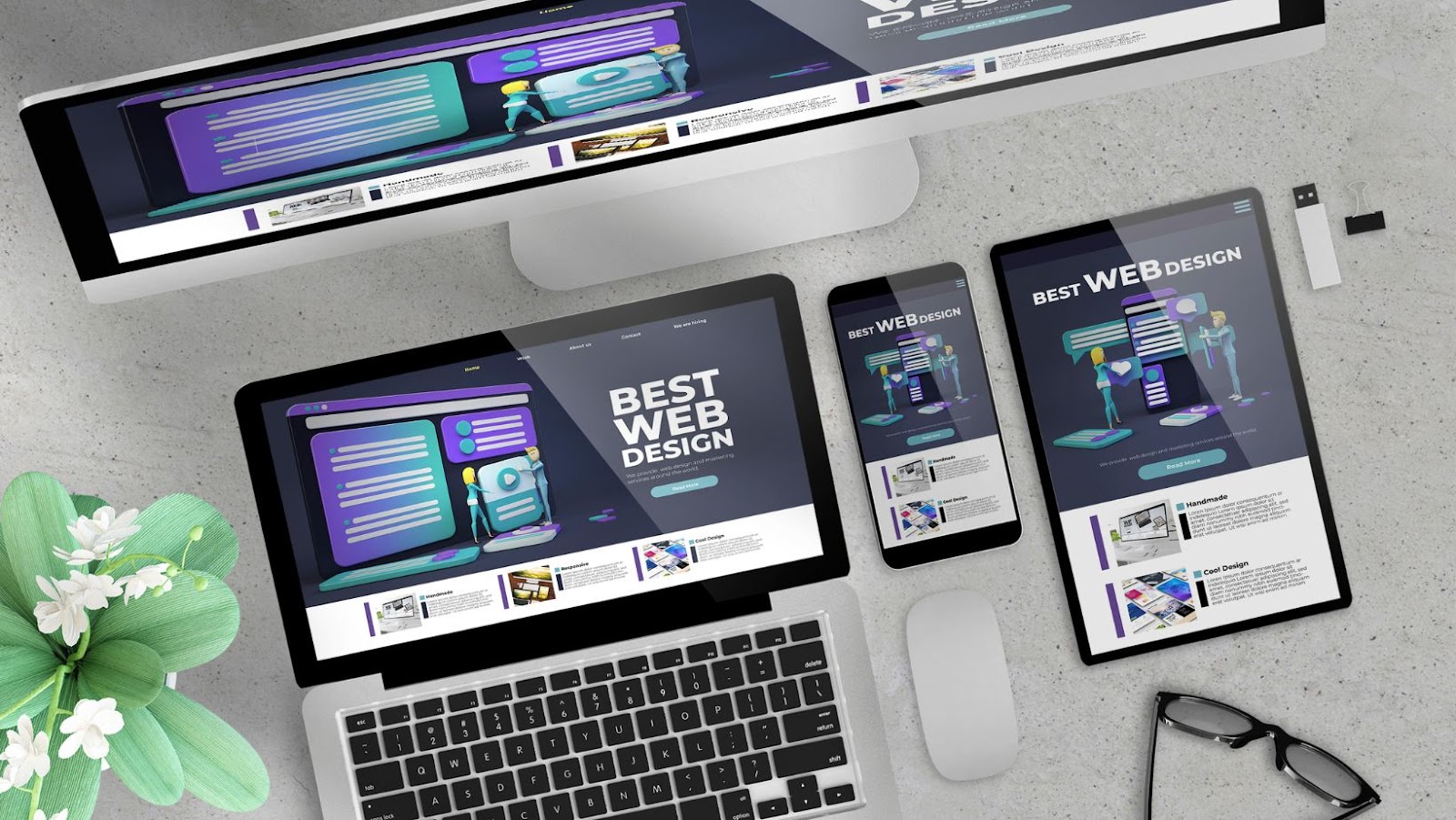 Responsive Web Design Agency
Responsive Web Design Agency
Responsive web design represents a fundamental shift in how we build websites, redefining the online user experience. This section ventures deeper into the essence and features of this design approach.
In the digital age, users access websites through diverse platforms – mobiles, tablets, desktops or laptops. Emphasizing the need for businesses to adapt, responsive design emerges as a dominant player. A responsive design takes into account the user’s environment, screen size, platform and orientation, ensuring consistent rendering of web pages.
Understanding the benefits of responsive design necessitates a grasp of its key features. Primarily, fluid grid systems, flexible images and CSS3 media queries hold the key.
- Fluid Grid Systems: Ensuring layout consistency across different screen sizes, the fluid grid system uses relative sizing to adapt the design. For instance, if a layout has three columns on a computer screen, on a tablet, it may display two columns and on a mobile, just one column.
- Flexible Images: Successful responsive designs also depend on handling images with care. To prevent distortion, images resize automatically based on screen dimensions. For example, a full-screen image on a desktop may appear as a centered, smaller version on a mobile device.
- CSS3 Media Queries: Media queries allow websites to collect data about the visitor’s device. This data conditions the display of certain CSS properties, creating an ideal viewing environment. For instance, a laptop user may have a different navigation bar compared to a mobile user.
Responsive web design, thus, is not simply a technique; it’s a strategic approach to creating user-friendly websites, invaluable in a digital age ruled by multi-platform access.
 Structuring a Criteria for Choosing a Responsive Web Design Agency
Structuring a Criteria for Choosing a Responsive Web Design Agency
Delving further into the complexity of responsive web design, spotlighting its importance becomes crucial. The paramount task then becomes choosing a capable responsive web design agency. Key factors come into play when making this selection including the agency’s experience, portfolio diversity, and client testimonials.
Experience remains a vital criterion in the selection process of a responsive web design agency. Agencies with impressive lengths of operational time typically possess a depth of knowledge. Additionally, they may have mastered the ins and outs of creating engaging, user-friendly websites. Not just in years, experience should be weighed in the number of diverse projects completed. For instance, an agency with 5 years of experience but over 100 diverse projects is often more reliable than one with 8 years but limited project execution.
Portfolio diversity speaks volumes about an agency’s ability to handle a host of different projects. Agencies boasting an expansive portfolio present evidence of their ability to deliver outstanding results across different industries. Prospective clients get an insight into the agency’s adaptive skills: catering to different tastes, meeting varying requirements, and delivering high-quality websites irrespective of the project type. An example would be a design agency with projects spanning e-commerce websites, portfolio sites, and full-stack development applications.
 The Cost of Hiring a Responsive Web Design Agency
The Cost of Hiring a Responsive Web Design Agency
Investing in a reputable responsive web design agency necessitates considerable financial planning. Professionals in the field command high rates due to their skill sets, with the price typically influenced by the project’s scope and complexity.
Factors Affecting the Price
- Experience and Expertise: Agencies with a proven track record in responsive design implementation often charge more. For instance, Company 1’s adaptability and attention to detail, mentioned earlier, contribute to a higher fee.
- Service Diversity: Firms that offer end-to-end solutions, like custom web design, ecommerce website design, and mobile application design demand higher compensation. Notably, Company 2’s embrace of cutting-edge technology justified a price premium.
- Project Complexity: Complex projects requiring intricate design strategies and extensive customization increase the financial outlay. A case in point remains the ecommerce business that saw robust growth by applying responsive design incrementally across their website and mobile application.
Despite the costs, it’s undeniable that responsive web design enhances business performance, evident from the ecommerce business’s 37% increase in registered users, a 45% boost in total sales, and a 40% rise in browsing sessions. Hence, the financial investment often results in significant returns in the long run.